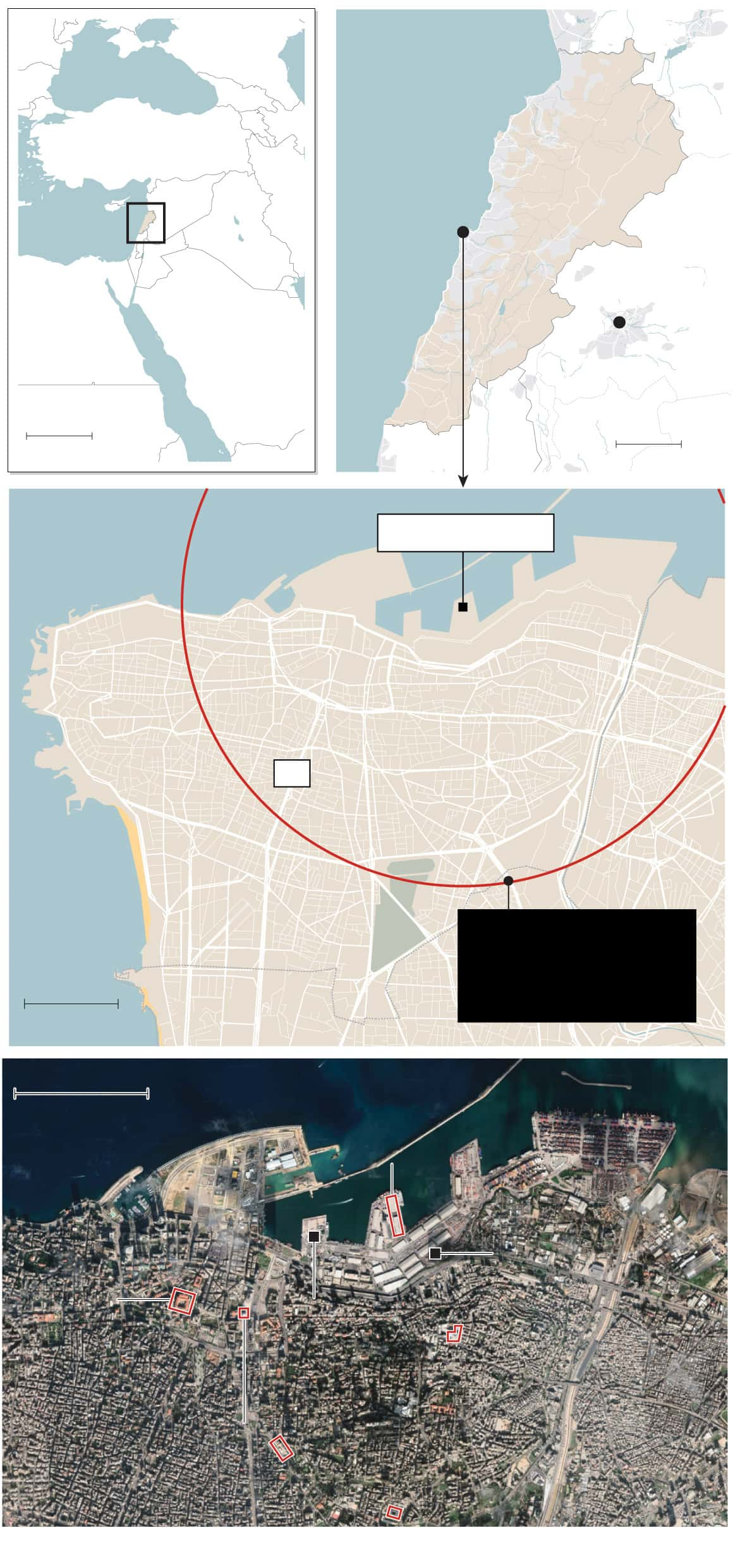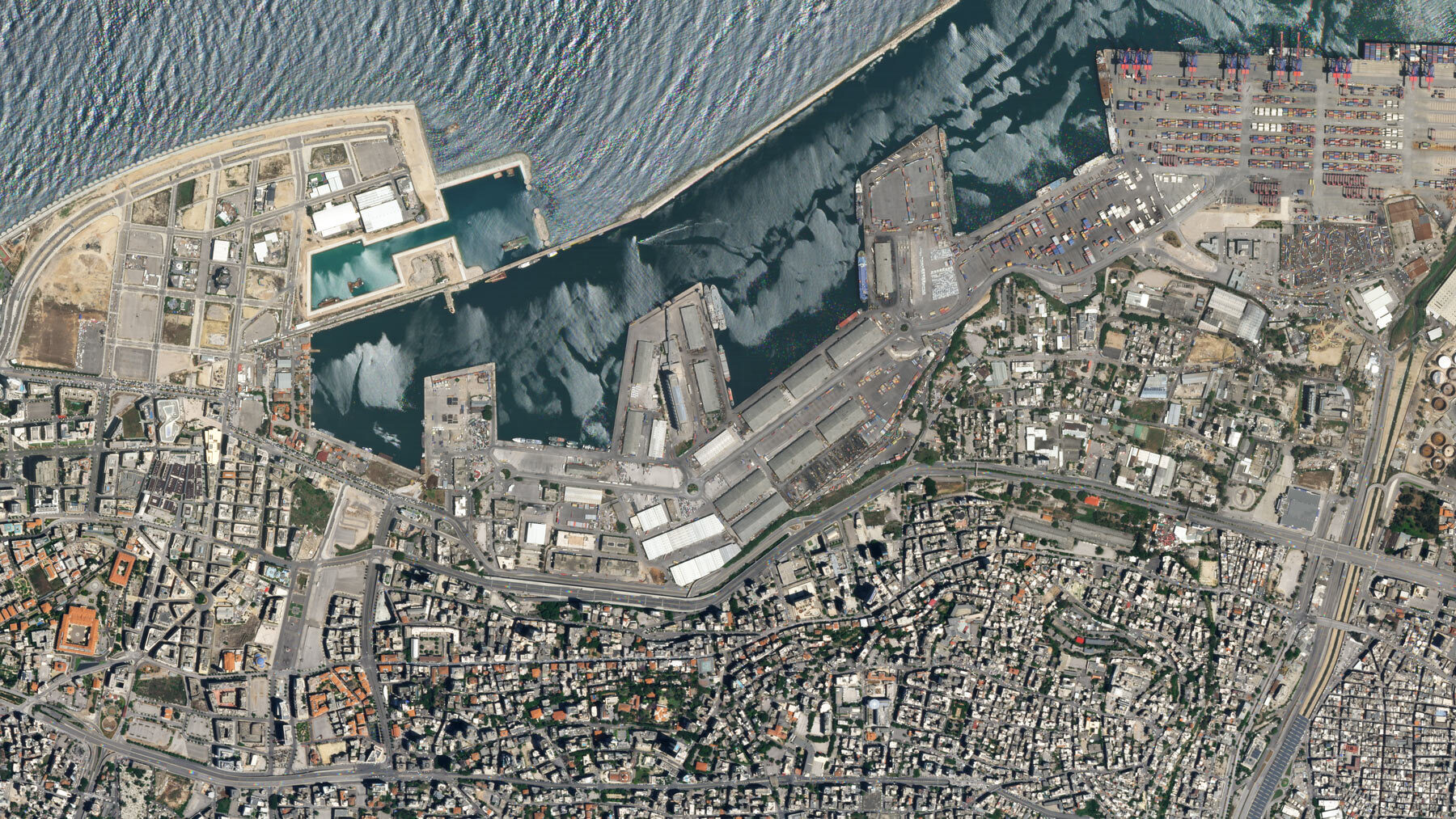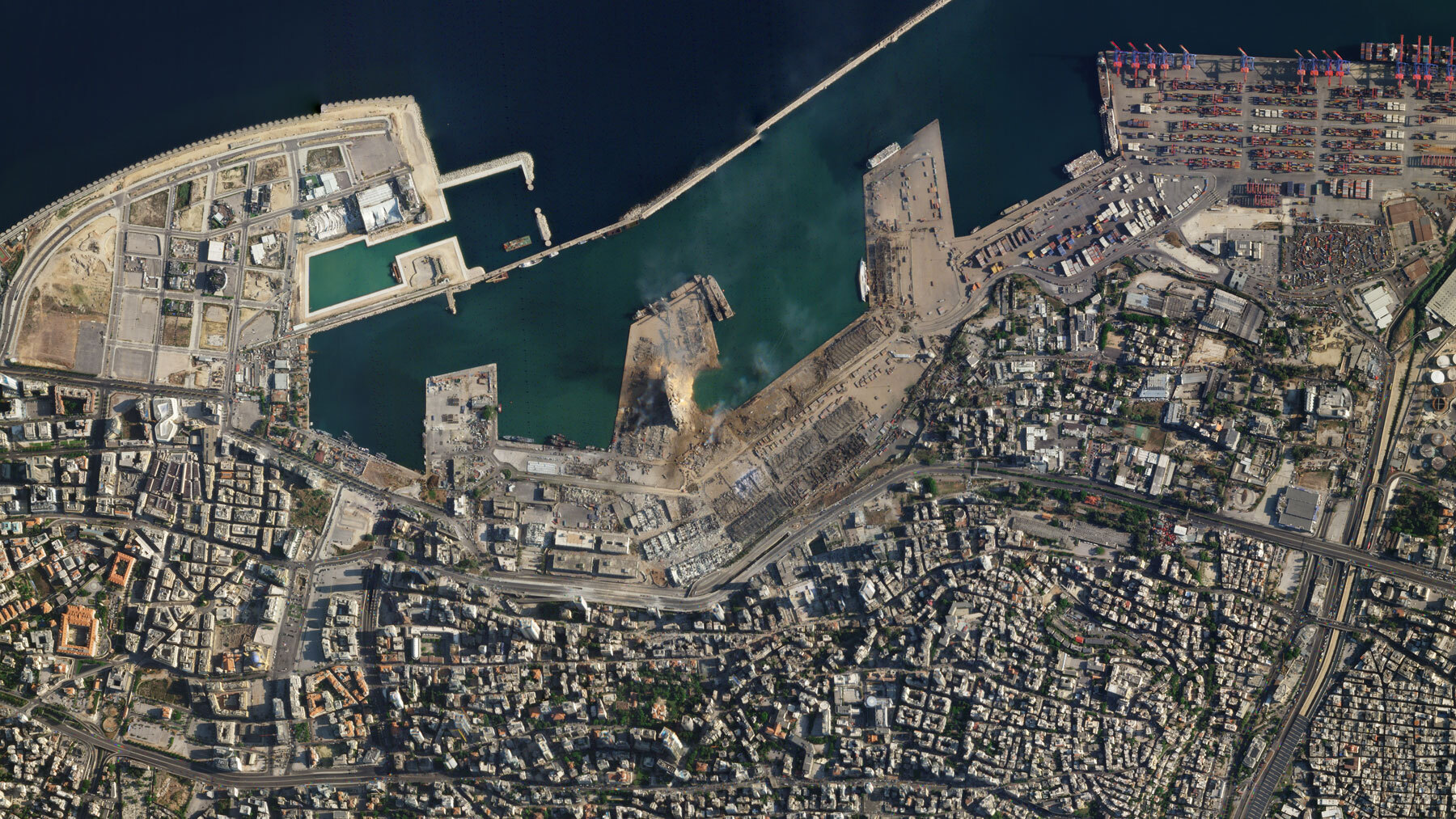
Beirut, Aug. 17: The mother of Charbel Hetti, one of the 10 firefighters who were killed in the Aug. 4 Beirut explosion, holds his portrait at his funeral.Hussein Malla/The Associated Press/The Associated Press
The latest
- Fearing new violence or even civil war, political and religious leaders in Lebanon are trying to ease the crisis ignited by Aug. 4′s blast in Beirut as another wave of street protests is expected Monday. In Beirut, The Globe and Mail’s Mark MacKinnon spoke with protesters about how they are demanding accountability from Lebanon’s elite, whom they blame for the explosion.
- One of the youngest victims of the blast at Beirut’s port was Alexandra Naggear, a three-year-old Canadian. Her mother tried to move Alexandra away from the window of their sixth-floor apartment overlooking the port, but she was thrown in the air, knocked unconscious and suffered broken ribs and fingers. Alexandra’s grieving family is thinking of moving back to Canada, her maternal grandfather Michel Awad said.
What happened in Beirut?

0
50
KM
TURKEY
LEBANON
Beirut
DETAIL
EGYPT
SAUDI
ARABIA
0
500
SYRIA
KM
Area of explosion
Mediterranean Sea
Port of
Beirut
Beirut
Central
District
EMILE LAHOUD
BEIRUT
51
SAEB SALAM
Horsh
Beirut
0
1,000
m
Damage seen at least 3 km away, encompassing area with more than 750,000 residents
Explosion site: 2,750 tonnes of ammonium nitrate stored since 2014
Grand Serail
government
palace damaged
Warehouses
destroyed
or damaged
Port buildings
severely
damaged
St. George
Hospital
damaged
Mohammad
Al-Amin Mosque
Sodeco Square mall
damaged
Hotel Dieu hospital
damaged
1 KM
THE GLOBE AND MAIL, SOURCE: TILEZEN;
OPENSTREETMAP CONTRIBUTORS; GRAPHIC NEWS

0
50
KM
TURKEY
LEBANON
Beirut
DETAIL
EGYPT
SAUDI
ARABIA
Damascus
0
500
SYRIA
KM
Mediterranean Sea
Area of explosion
Port of
Beirut
Beirut
Central
District
KM
EMILE LAHOUD
BEIRUT
51
SAEB SALAM
Horsh
Beirut
0
1,000
METRES
Damage seen at least 3 km away, encompassing area with more than 750,000 residents
Explosion site: 2,750 tonnes of ammonium nitrate stored since 2014
PORT OF
BEIRUT
Grand Serail
government
palace damaged
Warehouses
destroyed
or damaged
Port buildings
severely
damaged
St. George Hospital
damaged
Mohammad
Al-Amin Mosque
Sodeco Square mall
damaged
Hotel Dieu hospital
damaged
1 KM
THE GLOBE AND MAIL, SOURCE: TILEZEN;
OPENSTREETMAP CONTRIBUTORS; GRAPHIC NEWS

Mediterranean
Sea
TURKEY
LEBANON
DETAIL
Beirut
SYRIA
EGYPT
SAUDI
ARABIA
Damascus
0
500
0
30
KM
ISRAEL
KM
Mediterranean Sea
Area of explosion
Port of
Beirut
Beirut
Central
District
BEIRUT
EMILE LAHOUD
51
SAEB SALAM
Horsh
Beirut
Damage seen at least 3 km away, encompassing area with more than 750,000 residents
0
1,000
METRES
1 KM
Explosion site: 2,750 tonnes of ammonium nitrate stored since 2014
PORT OF
BEIRUT
BEIRUT
CENTRAL
DISTRICT
Warehouses
destroyed
or damaged
Grand Serail
government
palace damaged
Port buildings
severely
damaged
St. George Hospital
damaged
Mohammad
Al-Amin Mosque
Sodeco Square mall
damaged
Hotel Dieu hospital
damaged
THE GLOBE AND MAIL, SOURCE: TILEZEN; OPENSTREETMAP CONTRIBUTORS; GRAPHIC NEWS
The explosion: On Aug. 4, video footage captured what appeared to be a fire spreading through the port of Beirut, the Lebanese capital. Soon after, a giant mushroom cloud erupted over the city, emitting a shock wave that Germany’s geosciences centre GFZ says was equal to the force of a 3.5-magnitude earthquake. The blast could be heard more than 200 kilometres across the sea in Cyprus.
The dead and wounded: Around 180 people were killed and 6,000 wounded, according to the latest estimates from Lebanese officials. At least two Canadians, businessman Nizar Najarian and three-year-old Alexandra Naggear, among the dead.
The devastation: The blast shattered buildings and overturned cars for kilometres around, including Beirut’s downtown core and its only international airport. Many structures are uninhabitable, and some 300,000 people – more than 12 per cent of Beirut’s population – can’t return to their homes. Officials have estimated losses at US$10-billion to US$15-billion.
 May 31, 2020
May 31, 2020
 August 5, 2020
August 5, 2020
What caused the explosion?
For about six years, the port has been home to a cache of 2,750 tonnes of ammonium nitrate that was confiscated from a cargo ship, MV Rhosus. The vessel was impounded in 2013 as it tried to take the chemicals from Georgia to Mozambique, and its Russian owner abandoned the ship and crew, its captain said in a 2014 statement to a Ukrainian legal-aid group. Lebanese customs and state security officials tried for years to get the chemicals removed, but without result, the port’s general manager, Hassan Koraytem, said in a local TV interview.
Ammonium nitrate, a compound used in fertilizer, is highly explosive when mixed with fuel oil, but it generally doesn’t detonate without a fire to ignite it. In this case, local media reports and a security source who spoke with Reuters have pointed the blame at welding work in a nearby warehouse. But Lebanon’s President also said the investigation could look at “external interference” like a bomb or rocket as a possible cause.
Beirut, Aug. 9: A demonstrator gestures during an anti-government protest.Goran Tomasevic/Reuters/Reuters
How Lebanese are reacting
As Lebanese mourn the dead, search for missing people and clean up the damage to Beirut, they’re also facing imminent threats to food and housing security. The country was already on the brink of economic disaster after months of mass anti-government protests and the COVID-19 pandemic. Now, the aftermath of the explosion has further overwhelmed hospitals and destroyed a port that handled most of the tiny Mediterranean country’s imported food supply. Food insecurity will be especially acute for more than a million Syrians in the country, refugees from the nearly decade-long Syrian civil war.
Since the explosion, many have put the blame on decades of corruption and poor governance by a political class that has ruled Lebanon since its own civil war ended in 1990. Large anti-government protests have demanded accountability, and after several cabinet ministers quit on their own, Prime Minister Hassan Diab announced on Aug. 10 that he and his entire government would step down.
What Canada is doing
As governments around the world pledged aid to Lebanon, Canada announced an initial $1.5-million to “trusted partners on the ground” like the Lebanese Red Cross, and a further $3.5-million. The federal government is also matching Canadians’ individual donations to Lebanon relief and has been in talks to provide emergency grain exports.

Montreal, Aug. 6: People take part in a vigil for the victims of the Beirut explosion in front of the Lebanese consulate.Ryan Remiorz/The Canadian Press/The Canadian Press
How you can help
Several countries have answered Lebanon’s pledges for humanitarian aid, and the Lebanese Red Cross is welcoming donations as it treats the wounded. Lebanese people have also set up Instagram pages to co-ordinate the search for missing loved ones or help people find places to stay.
Compiled by Globe staff
Associated Press and Reuters, with reports from Mark MacKinnon and Tu Thanh Ha
Our Morning Update and Evening Update newsletters are written by Globe editors, giving you a concise summary of the day’s most important headlines. Sign up today.